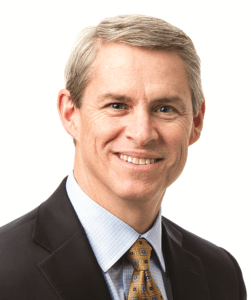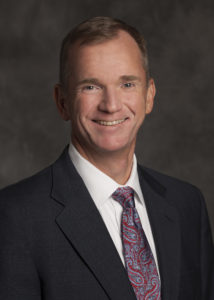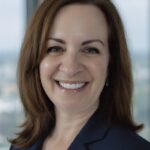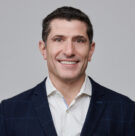“Michigan—not so great.”
The easy-to-overlook observation about insurance risk, delivered by Elizabeth Heck, chief executive officer of Greater New York Insurance Companies, during a panel discussion at the Standard & Poor’s Global Ratings Annual Insurance Conference in June, underscored a point echoed by her peers in the industry—that carriers are underwriting property insurance carefully, not just in California and Florida but in the middle of America as well.
Responding to questions from S&P Managing Director John Iten, Heck, along with Jack Roche, CEO of The Hanover Insurance Group and Joe Lacher, CEO of Kemper, also offered these more attention-grabbing viewpoints about conditions in the personal and commercial lines insurance markets:
- Homeowners profit will be back in 2025; carriers won’t be back in all states this year.
- Plaintiffs lawyers are leeches; litigation financers are thieves.
- Commercial lines pricing is not at the top of a cyclical peak.
Who said what? Read on.
Personal Auto Profit Returns First
The session began with Iten asking Lacher and Roche about the industrywide post-pandemic decline in personal auto insurance profitability. Lacher described the often-told story of escalating loss costs, supply chain pressures and the industry’s multiyear slog through rate filing processes to try to close the gap between loss and earned premium trends. “The day people stopped driving, you could have largely predicted that when they started again, there was going to be at least a year-and-a-half imbalance,” Lacher said, noting that the global supply chain surge in inflation pushed it north of two years.
Lacher reported that Kemper’s profitability on its auto business is back to pre-pandemic levels, and that “a chunk of the industry” is there as well. “We’re on the backside of what was a highly predictable issue and I’m fairly optimistic about the next several years in the auto environment from a personal lines perspective,” he said.
 “We believe we will get personal auto to profitability by the end of this year, and that homeowners will probably take into 2025 because of our concentrations in the Midwest.”
“We believe we will get personal auto to profitability by the end of this year, and that homeowners will probably take into 2025 because of our concentrations in the Midwest.” Jack Roche, The Hanover Insurance Group
Roche, adding that the industry has done its job in terms of understanding new driving patterns as it prices auto insurance going forward, said he is also bullish about personal auto profitability. “We’ve said out loud in the first-quarter call that we believe we will get personal auto to profitability by the end of this year and that homeowners will probably take into 2025 because of our concentrations in the Midwest, The Hanover’s leader said. “We had a particularly challenging issue with the severe convective storms…. We’ve done a lot to address that, putting unprecedented levels of pricing [in place], and now some terms of conditions,” he said.
Michigan and Micro Concentrations
Later, when Iten teed up the question of exactly what carriers are doing to address secondary perils in underwriting and pricing, Roche revealed that Hanover writes a 40-60 split of personal vs. commercial lines business and that across the entire book, roughly half is property versus casualty. “So we have to be on top of those trends and we have to essentially recalibrate how we insure the weather and what our property aggregations look like,” he said.
“[For] just about everybody, even if you had a good spread of risk before, the surge in insurance-to-value related to the inflation created additional micro concentrations. So, you’re either going to create some additional earnings volatility or you’re going to pay more for reinsurance.”
The Hanover, he said, is attempting to “figure out one business at a time, where are we in terms of the underlying profitability of the business,” he said. There is “serious pricing going into the market. Personal lines is in a rock hard market. Commercial property not too far behind. We also are introducing pretty unprecedented terms and conditions, particularly in the Midwest with some deductibles including some wind and hail deductibles.”
Last but not least, we are feeling the need to do some property thinning and some reduction in our micro concentrations, particularly in Michigan, which is our largest state,” he said.

Like Roche, Heck described a risk-by-risk approach to lowering the damage to GNY’s book of habitational business that might come from weather catastrophes. “As a regional company, we don’t write everywhere, and we try to avoid the areas that are most impacted by cat. We avoid Florida, Texas and California completely.”
But severe convective storm in the Midwest is inescapable for the insurer which has a big concentration in the Midwest. “It is a real issue,” she said.
“In addition to rate and higher deductibles and tighter terms, one of the things that we saw is that when an insured has skin in the game, they’re much more likely to take steps to mitigate the exposure. And so we’ve been using endorsements—ACV [actual cash value] endorsements tied to the age of roof because we know that a newer roof is going to hold up against the hail loss better than an older roof. And we found that insureds are accepting that, which is very positive.”
“We do have some concerns about the models,” she added, addressing a specific question from Iten about the usefulness of industry models in assessing the risks of secondary perils. “The models aren’t all that helpful with a severe convective storm, but we found that there’s some other tools that help us on a risk-by-risk basis to make some good decisions about the book of business.”
Like Hanover, “we’re also thinning the book and being much more selective of where we’re going to play in the market.”
Turning to Roche, she concluded, “Michigan, as you mentioned Jack—not so great.”
Leaving California
Moving the conversation to the West coast, Iten asked Lacher about the impact of the regulatory environment in California on personal lines insurers. In short, Lacher said that Kemper has been able to put through needed rate changes in personal auto. “On homeowners, we opted with a slightly different strategy. We exited. That was a really great way to manage that risk,” Lacher said.
Lacher said that initial stances by the California Department of Insurance limited personal auto insurers’ ability to deal with the post-pandemic conditions, preventing the industry from collecting enough money to pay losses and make a reasonable return. CDI has since eased up on that.
“At some point, if somebody tells you they won’t let you make money, you’re going to listen to them,” he said. When the industry started to listen, carriers started exiting, Lacher said.

“At some point, if somebody tells you they won’t let you make money, you’re going to listen to them,” he said. When the industry started to listen, carriers started exiting.”
Joe Lacher, Kemper
“The insurance commissioner wisely recognized that and led the department to change a set of behaviors where traditionally they might’ve said focus on a 6.9 percent rate increase and that’ll go in without a hearing,” he said. “‘There is a real issue here. File for what you think you need and get back to a healthy position and move forward,'” Lacher said, imagining the California regulator’s thought process.
“For a lot of us, that was something we hadn’t seen in decades,” said Lacher, noting that the fresh stance allowed Kemper to rapidly restore health to its auto book. “We feel terrific about where our position is in terms of having the appropriate balance of being able to underwrite and price and make a reasonable return and service our customers.
In contract, homeowner remains a problem in a California marketplace. “There’s a recognition and concern for affordability for consumers, and I get that….At some point, we’re all consumers as well. But for a state that is on the leading edge of trying to educate the rest of us on how important climate change is and how it’s impacting losses to not fully let the insurance industry use modeling to project what those losses are… is problematic,” Lacher said, referring to rules preventing insurers from using catastrophe modeling which are now in the process of being changed.
Related articles: Sorry, Wrong ZIP Code: Regulators Move Forward With California Reforms; Raise a Glass to Cat Models: More California Hearing Deets; State Farm Seeks Large California Rate Hikes; CDI To Probe Financial State
Messages about climate change and regulatory reforms to support a health property insurance market “have to get mashed and in line,” Lacher said. “They’re thinking about it, they’re talking about it, but at some point what we need from a risk management perspective… is we need them to stop talking about and start doing it.”
The Societal Impact of Abuse
Toward the end of the session, a member of the audience asked the panelists about the “societal problem” caused by carrier exits. “As insurers pull out of these troubled states…], has the need for catchup gotten so great that it is going to be challenging [for carriers] to even reenter?…. What does it mean for the average person who just can’t get insurance?” he asked.
“It is a societal problem,” Lacher agreed. “At first principles, all insurance is trying to do is pool the risks. ‘Let’s all put a couple of bucks in together. One of you has a car accident, one of you has a homeowner’s loss. The money will be there to fund it….’ And there’s a regulatory process to make sure that we’re not abusive in terms of how we work that pricing.”
“What’s happened is the regulators, in some cases, have gotten abusive in terms of not letting us collect enough dollars to cover those risks. Or plaintiffs’ attorneys have gotten abusive, trying to be a leech and suck too much out of the system in an inappropriate fashion. Then the equation gets imbalanced. When it’s imbalanced, we’re not going to bring the capital to bear to provide that important societal service,” Lacher asserted.
“If you let the leech continue to suck up things, or if you don’t [let carriers] use the right pricing models to realize that there is a cat exposure, at some point, we’re going to leave,” he said, agreeing that the smallest player in the process with the least capacity to control it—the consumer—ultimately gets hurt.
“We want to solve the problem….It isn’t like the P/C industry is known for being an incredibly high ROE business….We’re not making private equity returns on this. We’re making a reasonable return and they [have] got to let us cover it,” Lacher said, referring to regulators.
Read about the CEO strategies and remarks related to commercial lines in the related article, “Commercial Lines Not at Top of Cycle; ‘Thieves’ Fuel Social Inflation: P/C CEOs”





















 Viewpoint: Agentic AI Is Coming to Insurance Industry – Much Faster Than You Think
Viewpoint: Agentic AI Is Coming to Insurance Industry – Much Faster Than You Think  The Latest Launches from Allstate, WTW, Whisker Labs
The Latest Launches from Allstate, WTW, Whisker Labs  How One MGU Grew Fivefold When Capacity Fled Cat-Prone Property Markets
How One MGU Grew Fivefold When Capacity Fled Cat-Prone Property Markets  Police Recover Swallowed Fabergé Pendant 6 Days After it Was Stolen
Police Recover Swallowed Fabergé Pendant 6 Days After it Was Stolen 













